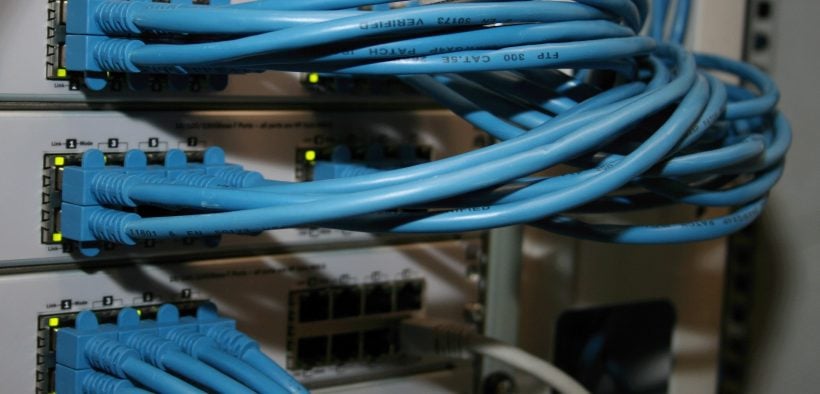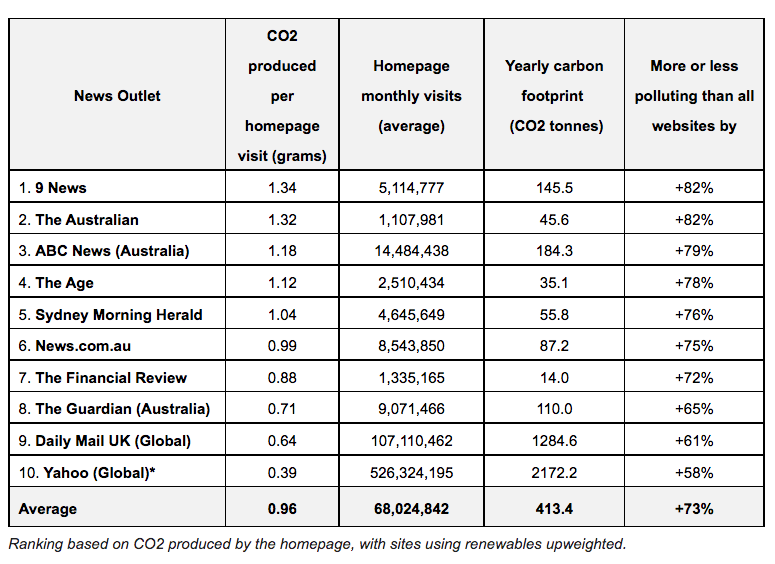Share

All digital activity – including clicking on this article – produces carbon emissions. This means any brand with an online presence (so virtually every one) should be mindful of how digital architecture affects its carbon footprint.
And the impact of this is significant. Digital activities contribute 3.7 percent of global emissions – as much as the entire aviation industry.
That’s why Australian digital agency WongDoody has analysed and ranked the carbon footprints of Australia’s biggest news sites.
The analysis looked at 10 popular news websites, including some of Australia’s top news outlets and a couple of global brands for comparison, assessing 15 pages from each.
The digital experts analysed the use of imagery, fonts, ad tracking, auto-play videos, and forced scrolls to determine the carbon emissions generated by a single site visit.
Then, the WongDoody team used organic web traffic data to calculate the annual carbon footprint of each site.
How the news sites stacked up
Bad news: Australia’s most visited news sites are all underperforming, producing an average of 85 tonnes of CO2 annually. And while this is less than the 1728 tonne average produced by the global news sites, owing to the large volumes of international web traffic there, all Australian sites produced more emissions per visit than their global counterparts.
In fact, the Australian news sites assessed were 76 percent more polluting than the average website. This is compared to the two global news brands, which were 60 percent more polluting than all websites.

Why digital design matters
It’s easy to write off carbon emissions as a largely unchangeable consequence of website existence. But digital design matters. This is proven by the results of WongDoody’s analysis, where, for example, The Financial Review produces less than a third of the carbon emissions as The Australian – despite having more monthly homepage visits.
“It’s easy to think of digital options as greener – especially in journalism where we think of replacing paper and ink with a website as a better environmental option,” says James Noble, chief experience officer at WongDoody.
“People often don’t realise the internet has its own carbon footprint, with the impact of our digital industries equal to that of the aviation industry. Terms like ‘the cloud’ are misleading. A huge amount of power goes into the servers that support that, with many of them being cooled in our oceans. It’s how Tasmania’s internet got famously eaten by a shark.”
“While we’ve used the news sector as an example, the problem is much broader. Any website that has too many images runs on unsustainable servers and has a huge amount of traffic will physically impact the world.”
It also seems the introduction of generative AI, which already has some Australian’s nervous, will exacerbate the problem. Current estimates have the carbon footprint of an AI query as four to five times greater than that of a normal search.
“While it’s not top of mind, the creation of a swagged-out Pope using AI does have a carbon footprint, and it’s incumbent on us all to be more aware of that impact as we operate in an increasingly digital world,” says Noble.
Minimising a digital carbon footprint
While digital users ought to be mindful of their online activity, a brand also has a responsibility to ensure its website architecture minimises carbon emissions.
News sites, like the ones assessed, will predictably have an outsized footprint due to a reliance on images and videos. But these interactive elements should be used judiciously.
Moreover, businesses can decrease the amount of greenhouse emissions released by adopting sustainable design. This includes using current image formats and content delivery methods, limiting ad tracking and auto-play videos, avoiding storing old content and assessing how energy-intensive fonts and colours are.
“It’s all about how much energy it takes to power a site; some of that’s relatively easy to see. If there’s lots of stuff moving and playing, and you see that wheel spin after the content has loaded as it contacts all the ad servers – it’s probably intensive, so it’s best to at least power it with renewables,” says Noble.
“The next step is to look at ways of delivering the same level of user experience without the high energy requirement, which is where good, sustainable design comes in.”















